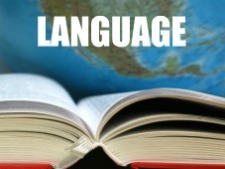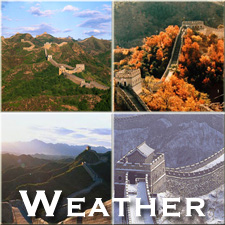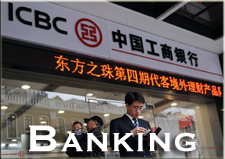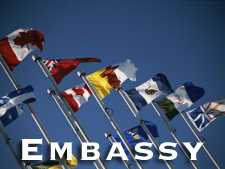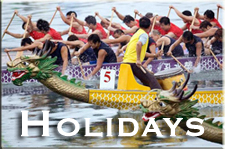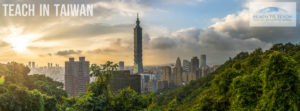Guide to Living in Hong Kong
Hong Kong was given back to China from the British on July 1, 1997. There is a heavy British influence throughout Hong Kong, which creates a distinct culture for the area. The design of the flag showcases the mix of Hong Kong and China. The red symbolizes China; and the Bauhinia flower, which was discovered in Hong Kong, symbolizes Hong Kong. The flag symbolizes how Hong Kong is part of China and how it flourishes within China, which coincides with the 1 country, 2 systems policy.
The government of Hong Kong has various websites that are beneficial to foreigners. Depending on the inquiry, the Hong Kong government has a specific page that would be of assistance in resolving the inquiry. For a foreigner attempting to establish him or herself in Hong Kong, this webpage has links for general information, identity cards, housing, transportation, employment, taxes, health services, social services, education for children, and emergency information.
The information provided on this webpage is current and extremely organized.
About Hong Kong
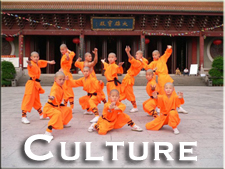
Culture in Hong Kong
Hong Kong territory is occupied by an estimated population of 7.15 million, in 2012, with 95% Chinese and 5% other.
The territory is known to be one of the most densely populated areas with 6,620 people per square kilometer.
The culture of Hong Kong is best described as a mix of Chinese culture and British colonialism.
In Hong Kong, the family is viewed as a unit, so each individual can influence another’s perspective of the family. An individual’s position is based on the teachings of Confucius, behaviors and ethics obligations based upon a relationship. This philosophy stresses duty, loyalty, honour, filial piety, respect for age and seniority, and sincerity. When interacting with one another, the people of Hong Kong have minimal personal space, however they are uncomfortable with body contact.
Gifts are an important part of the culture as it builds and maintains relationships. The most common gift is an even amount of money in a red envelope.
Hong Kong is one of the most important international finance and business centers in the world. It is a territory with a large population governed by a ‘one country, two systems policy’. The highly educated population and diverse business activities influence the culture to be a multicultural state. The culture is a mixture of eastern and western culture, traditional and modern, old and new merged together to create a distinct culture to set the territory apart from the world – seen by the tourism board as Asia’s World City.
History of Hong Kong
The history of Hong Kong is long and varied. Hong Kong was part of China prior to the British settlement in the 19th century. It was ruled by dynasties for much of its history; and the last great ruling Dynasty was the Qing Dynasty.
By that time, China was practically self-sufficient and had no need to trade. Westerners, however, wanted to trade with China for their silks, and precious metals. Thus, the arrival of the West began in the 19th century.
British traders came to Hong Kong to trade, but the emperor was more focused on preserving the Chinese way of life and culture. The persistence of the British paid off, however, and the emperor allowed them to trade through a system known as the Canton System.
This system made Hong Kong a trading port for the West. They were only allowed to trade for six months out of the year, and the Chinese placed high tariffs on the goods leaving the country. It was during this time that the British introduce opium to the Chinese. Opium was used heavily by the Chinese and had a devastating effect on the population by undermining the way of life in China. The emperor noticed this and shut down trade completely with the British.
Next, he ordered all opium to be seized from one of the British opium ships. This was enough for the British to act. Thus, the Opium War began. The British dominated the Chinese during this war and signed into effect the Treaty of Nanjing. Unfortunately, the Treaty of Nanjing was an unequal treaty for the Chinese, and they ended up ceding Hong Kong from China. China also had to pay a huge indemnity, and it opened up free trade in Hong Kong and five other ports with a more reasonable tariff.
The British gave Hong Kong back to China in the 90s under special circumstances: Hong Kong would remain a free trade area, and it would not be placed under the same rules as Mainland China.
Language in Hong Kong
The two official languages of Hong Kong are English and Chinese.
During the colonial period, English was the primary language in Hong Kong due to trading; it was not until 1974 that Hong Kong adopted Chinese as the second official language. Cantonese is the main dialect spoken in 89% of households in Hong Kong compared to the 25% who speak Mandarin, which is the official language of Mainland China.
Cantonese is known for its complicated tones and colorful expressions. In Hong Kong, the written Chinese language uses traditional Chinese characters, while Mainland China has adopted simplified characters.
English is spoken as the primary language in 3% of the Hong Kong households, while 38% of the population claims the ability to speak English.
While the country has two official languages, English is the preferred language in business, government, and tourism due to the fact the country is an international business hub.
Weather in Hong Kong
Hong Kong is located between the Tropic of Cancer and the north 35th parallel, meaning that the climate zone is subtropical. The weather in Hong Kong is fairly humid year-round.
Hong Kong experiences four distinct seasons: autumn, winter, spring, and summer. Between late September and end of November, Hong Kong experiences the autumn season with cool average temperatures of 72°F and 81°F and bountiful sunshine; this is the ideal time to travel.
Hong Kong’s winter season occurs from December to February with cool temperatures averaging 57°F to 67°F along with dry conditions.
The spring season spans from March to mid-May with warm and humid average temperatures from 64°F to 77°F. A major concern for spring is reduced visibility due to fog and drizzle, which can create delays in air and water transportation.
Summer runs from late May to mid-September, producing hot and humid average high temperatures above 90°F. Summer tends to be the rainy with thunderstorms and typhoons.
The most disastrous weather pattern for Hong Kong is a typhoon, tropical cyclone or hurricane. The tropical cyclone and thunderstorm season ranges from May through November, with typhoons being prominent during the month of September. A typical tropical cyclone or typhoon brings high winds and heavy rainfall to the country. In order to maintain safety, the Hong Kong Observatory uses a Typhoon Warning Signal System to determine the level of threat. The signal numbers are 1, 3, 8, 9, and 10.
Signal number 1 means a cyclone is located within 500 miles of Hong Kong and may affect the territory. When the warning level is 3 or less, businesses remain open, but individuals should stay alert to fast changing weather conditions.
Signal number 8 means a gale or storm force winds in Hong Kong near sea level with sustained wind speed of 39 to 73 mph and wind conditions will persist.
Once a signal has reached a number 10, hurricane force winds are expected to reach above 73 mph and potentially gust above 136 mph.
When warnings reach a level 8 or higher, all businesses shut down. Employers do not require their employees to report to work unless it has been previously agreed upon. Once warnings have reached 9 or 10, only essential employees are to report for work.
Cost of Living in Hong Kong
Food in Hong Kong
Simply put, the food in Hong Kong is nothing short of amazing. You’ll be hard-pressed to find better food elsewhere in Asia, although Taiwan and Singapore come highly ranked for their food cultures as well.
Hong Kong is mainly influenced by Cantonese food and Western cuisine. It’s normal in Hong Kong to eat five times a day. Furthermore, portion sizes, compared to international standards, are smaller.
Eating out in Hong Kong is a national pastime. You’ll find a wide area of domestic and international cuisines to choose from, including familiar fast food chains like McDonald’s and KFC.
Meal Prices in Hong Kong
Numbeo offers a great breakdown of what food costs in Hong Kong. In short, though, meal prices vary greatly in Hong Kong. The average cost of food in Hong Kong per day is HK$205. An average meal in Hong Kong costs approximately HK$82 per person. This number is based on spending habits of previous travelers and teachers there. Breakfast costs are usually much cheaper than lunch or dinner.
Dishes You Should Try in Hong Kong
Hong Kong has an excellent reputation for its street food, and there are more Michelin Star 1 restaurants in Hong Kong than any other country in Asia.
- Wontons
- Shrimp and Chicken Balls
- Steamed Shrimp Dumplings
- Fish Balls
- Sweet and Sour Pork
- Pineapple Bread
- Roast Goose
- Beef Brisket Noodles
- Steamed Rice Rolls
- Phoenix Talons (Chickens’ Feet)
- Clay Pot Rice
- Snake Soup – A recommended place to eat this delicacy is at Ser Wong Fun
- Hong Kong Milk Tea
- Chow Mein
- Black Sesame Soup
- Mooncakes
- Winter Melon Soup
- Mapou Doufu
- Hot and Sour Soup
- Lo Mein
- Yangzhou Fried Rice
- Biangbiang Noodles
Housing in Hong Kong
Due to Hong Kong’s large population and relatively small land area, housing creates an interesting challenge for housing developers and people looking to live within the city.
Public housing is increasingly popular with approximately 230,000 waiting on applications. This equates to about a 3-year waiting period for families.Shoebox apartments are a source of housing within Hong Kong. The average living space of a person in Hong Kong is 130 square feet per person.
In shoebox apartments, the average living space of a person is 60 square feet per person. Besides the lack of space in these apartments, there is also the issue of poor ventilation. When the temperature is 86 degrees Fahrenheit outside, the apartments are about 104 degrees Fahrenheit.
Higher officials know of this issue of poor housing, but have yet to come up with a solution because people just move from illegal apartment to illegal apartment.
Transportation in Hong Kong
Since the population of Hong Kong is extremely large, public transportation must be able to accommodate the number of people going to and from work every day. There are many modes of transportation in Hong Kong. These modes include trains, cars, taxis, and buses.
Trains are used by both residents and visitors. Mass Transit Rail Corporation Limited (MTR) operates the railways in Hong Kong. There are nine rail lines with a length of approximately 108.5 miles. As of June 2011, MTR carried 3.9 million passengers per day.
The Airport Express is part of MTR and is used exclusively to transport people from the Hong Kong International Airport to the city of Hong Kong. This rail line is only 22 miles long and as of June 2011, carries approximately 31,500 passengers per day. This is the most economical way to travel from the airport to the city.
The third railway is referred to as Light Rail. Light Rail is located in the Northwest New Territories and is approximately 22.5 miles long. As of June, 2011, Light Rail transported 430,000 passengers per day.
Cars are also used throughout Hong Kong. Personal cars are used as a symbol of status in the city. Hong Kong has the largest amount of Rolls Royce luxury cars per capita and the second largest Mercedes per capita in the world.
Taxis are convenience, but they’re more expensive than rail transportation. Taxis are red, green, or blue, with each color representing a territory of transport. Red taxis transport within Hong Kong Island, green taxis transport within New Territories, and blue taxis transport within Lantau.
Hong Kong also has an extensive bus system. There are five franchised bus companies with a combination of 559 bus routes. The fees range from $1.80 to $48, depending on the distance you are traveling.
There are also minibuses that seat only 16 people. These are color-coded like the taxis. Red minibuses do not have routes while green minibuses follow pre-set routes.
There are 4,350 minibuses with 1,262 being red and 3,087 green. Red minibuses carry approximately 353,000 passengers per day while green minibuses carry approximately 1,526,000 passengers per day.
Resources: Hong Kong Transport Department
Phones in Hong Kong
The people of Hong Kong use both cell phones and landlines, but cell phones in Hong Kong are much more common. Hong Kong has the highest number of cell phones per capita in the world. By the end of 2012, there were 16,685,000 public mobile subscribers including SIM cards. This equates to approximately 2 cell phones per person.
Landlines in Hong Kong are similar to landlines in North America in that many people no longer use them. With the heavy integration of cell phones in Hong Kong, landlines, more specifically pay phones, have become obsolete. However, it is still acceptable in Hong Kong to enter a place of business and ask to use the landline.
Store owners are also willing to let people use the phone with the hope the person will end up buying something within the store.
Internet in Hong Kong
According to the Hong Kong Bill of Rights Article 16 regarding freedom of opinion and expression, there is uncensored access to the Internet.
Approximately 75% of people have access to the Internet in Hong Kong through broadband connectivity. More people use broadband than dial-up.
Services in Hong Kong
Banking in Hong Kong
Hong Kong maintains a three-tier system of deposit-taking institutions, namely, licensed banks, restricted license banks, deposit-taking companies. They are collectively known as authorized institutions (HKMA Source).
Hong Kong’s banking authority is separate from China’s banking industry. They have banknotes that range from $10HKD to $1000HKD.
The exchange rate is generally around 7.75 HKD to 1 USD.
Banking in Hong Kong is extremely simple, given that Hong Kong is a major financial hub of the world.
Medical Services in Hong Kong
Hong Kong, along with China, is second only to the United States for having the highest medical costs in the world. Medical services in Hong Kong’s healthcare system are comprised of public and private systems, which is comparable to western healthcare systems. Traditional medicine, like herbal medicine and acupuncture, is used for illnesses and chronic problems that cannot be cured by modern medicines. The public healthcare system is funded by the government and managed by Hong Kong Hospital Authority.
The public healthcare system, comprised of 42 hospitals and 121 outpatient clinics, is to provide inexpensive modern western medicine and treatments to the people of the territory. Between the hospitals and clinics, they provide 27,000 beds, or about 4 beds for every 1,000 members of the population. Many people choose to use the public system for major illnesses and procedures, like childbirth or surgeries. Hong Kong Hospital Authority enforce workers to be trained in “good practice” by requiring active participation in trainings, continuing education, clinical audits, attendance at clinical management meetings, community care participation, and contribute to clinical research.
The private healthcare system is comprised of 13 hospitals registered with the government. Residents of the New Territories tend to choose private practices for common day-to-day illnesses, like a cold or ear infection. However, in order to afford the cost of a private practice, an individual is advised to have private health care insurance due to high medical costs.
Embassies in Hong Kong
Once again with the territory of Hong Kong being an international business hub, there are more than 100 countries represented by foreign embassies in Hong Kong.
For the United States, the embassy is called United States of America Consulate located at 26 Garden Road, near Cheung Kong Park. Since 1843, the U.S. Consulate General in Hong Kong has existed, beginning with working out of his residence (Consulate General). Today, the current Consul General is Clifford A. Hart and the Deputy Consul General is Tom Cooney.
In general nationals of most countries do not require a visa to enter Hong Kong for tourism and can stay for periods varying seven to 180 days, depending on nationality.
A United States citizen can visit Hong Kong up to 90 days without a visa, but a visa is required for those to work, study, establish or join in any business or to take up residence (Hong Kong Visas).
Repeated business traveler can acquire a Hong Kong Special Administrative Region Travel pass under certain conditions. The three eligibility requirements are: genuine need to visit Hong Kong frequently, previously visited Hong Kong on three or more occasions in 12 months prior to application or the Director of Immigration must be satisfied that your visits may bring substantial benefits to Hong Kong.
Misc. Information for Hong Kong
Holidays in Hong Kong
Because of the Western and Eastern influence in the city, the people of Hong Kong celebrate a diverse range of holidays throughout the year.
The list of holidays in Hong Kong include:
Hung Shig Festival, Ching Ming Festival, Birthday of Tin Hau, Cheung Chau Bun Festival, Birthday of Buddha, Birthday of Tam Kung, Dragon Boat Festival, Birthday of Kwan Tai, Seven Sisters Festival, The Hungry Ghost Festival, Mid-Autumn Festival, Monkey God Festival, Birthday of Confucius, Chung Yeung Festival, Winter Solstice Festival, and the Chinese Lunar New Year.
The Chinese Lunar New Year is the most prominent holiday on the calendar. The holiday lasts 15 days long on the first lunar day of the first lunar month. On the first day of Chinese New Year, people go to their local temple to pay respect to their ancestors. This is typically done by lighting incense.
Day Two is the Birthday of Che Kung, a Song dynasty military commander. People spend this day showing respect to Che Kung and hoping to be blessed with a year of good fortune.
Day 15 is the last day of the Chinese New Year and it is referred to as the Spring Lantern Festival. This event was first used to worship Buddha, but it is now common for people of all religions to light lanterns on this day.
Administrative Tools for Living in Hong Kong
When you move to Hong Kong, you will make a decent salary. Hong Kong is an expensive city to live in, though, and you’ll need to keep an eye on your finances so you don’t overspend.
Teaching English in Hong Kong is appealing because it’s an international city and it’s quite Westernized. Teachers can earn between $1,800USD and $3,200USD per month, depending on experience and qualifications. Some schools will also include free perks such as flights and contract completion bonuses.
Tips for Living in Hong Kong
- Escape Artist – A quick list of unwritten rules for surviving life in China – read for a quick laugh and remember you’re not alone!
- Lost Laowai – The expat section of this website is especially useful, as you can offer advice, rant, and learn the behavior of both “good” and “bad” laowai.
- Cultural China – This website attempts to explain in laymen’s terms China’s 5000+ year history.
- The Beijing Reviewer – Practical advice from a long-term ESL teacher’s perspective. If you’re considering working while studying, check this out!
- @tbjTeachEnglish – Follow this Twitter account for real-time job opportunities for English teachers in Beijing.
Things to do in Hong Kong
As a teacher in China, you’ll inevitably have some free time in need of filling. Whether you prefer to take in more cultural activities, taste local cuisine, or check out the local nightlife, these websites will point you in the right direction for upcoming events and activities.
- City Weekend – No matter what Chinese city you are studying in, City Weekend is your go-to resource for what’s happening nearby.
- Heyrobics – If you’re packing on the pounds from too many helpings of dumplings, check out this fun and colorful exercise club in Beijing.
Learning Chinese

